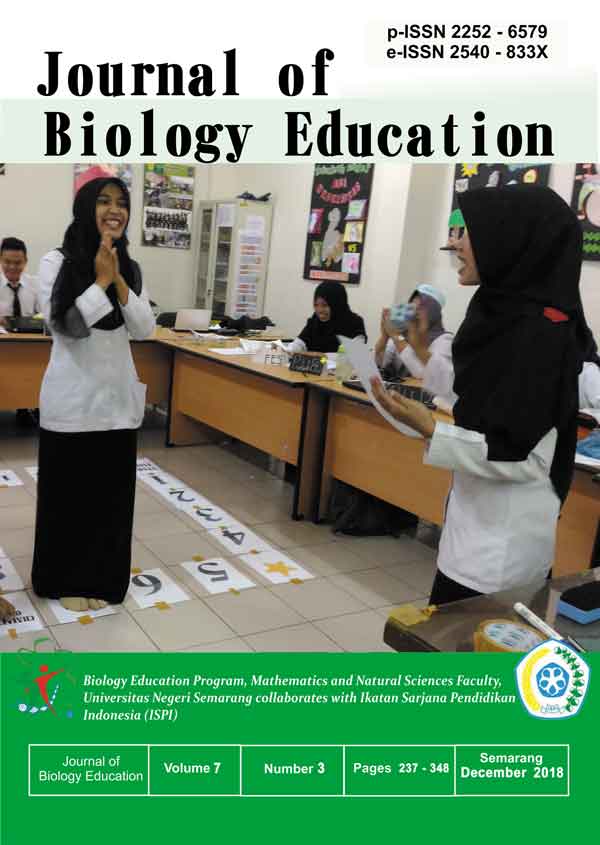The Effectiveness of Problem Based Learning Model Aided with Concept Mapping on the Analysis of Senior High School Students' Ability in Learning Material of Immune System
Abstract
Problem based learning is learning model suitable for 21st Century’s educational purpose. Concepts of learning material can be built using concept mapping. The objective of this research is to analyse the effectiveness of problem based learning model aided with concept mapping on the analysis of Senior High School students' ability (differentiating, organizing, and attributing aspect) in learning material of Immune System. The subject of this research is eleven grade students of SMA Negeri 12 Semarang and SMA Kesatrian 1 Semarang, each of these senior high schools provided two experimental classes. The design of this research is pre-experimental, with one group pretest-posttest design. The method of gathering data was used in this research is test and observation. Instruments that were analyzed in this research are multiple choice, students discussion’s worksheet, product of learning outcomes, and learning implementation. The snalysis ability of students from SMA Negeri 12 Semarang showed average of 80% with classical content mastering for XI-MIPA 4 and XI-MIPA 5 are 84,2% and 76,4% respectively. Average of N-gain is 0,4706 which categorized in medium criteria. The analysis ability of students from SMA Kesatrian 1 Semarang showed average of 73% with classical content mastering for XI-MIPA 1 and XI-MIPA 2 are 76,4% and 81% respectively. Average of N-gain is 0,4426 which categorized in medium criteria. Based on the research result can be drawn a conclusion that implementation of problem based learning aided with concept mapping is effective for increasing students’ analysis ability in SMA Negeri 12 Semarang and SMA Kesatrian 1 Semarang.
The copyright of the article once it is accepted for publication shall be assigned to the journal as the publisher. The intended copyright includes the right to publish the article in various forms (including reprints). The journal maintains the publishing rights to the published articles.
This work is licensed under a Creative Commons Attribution 4.0 International License.








